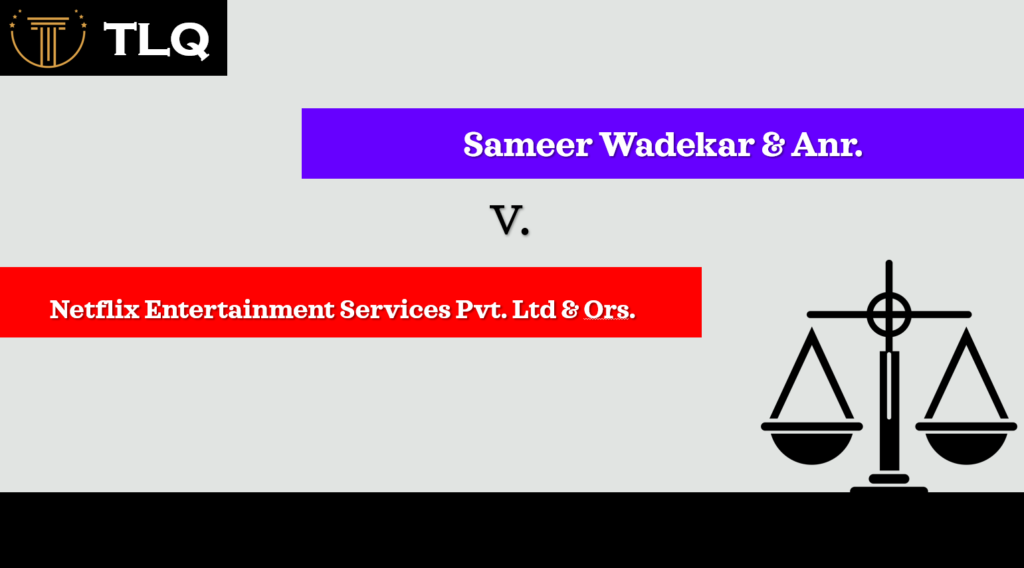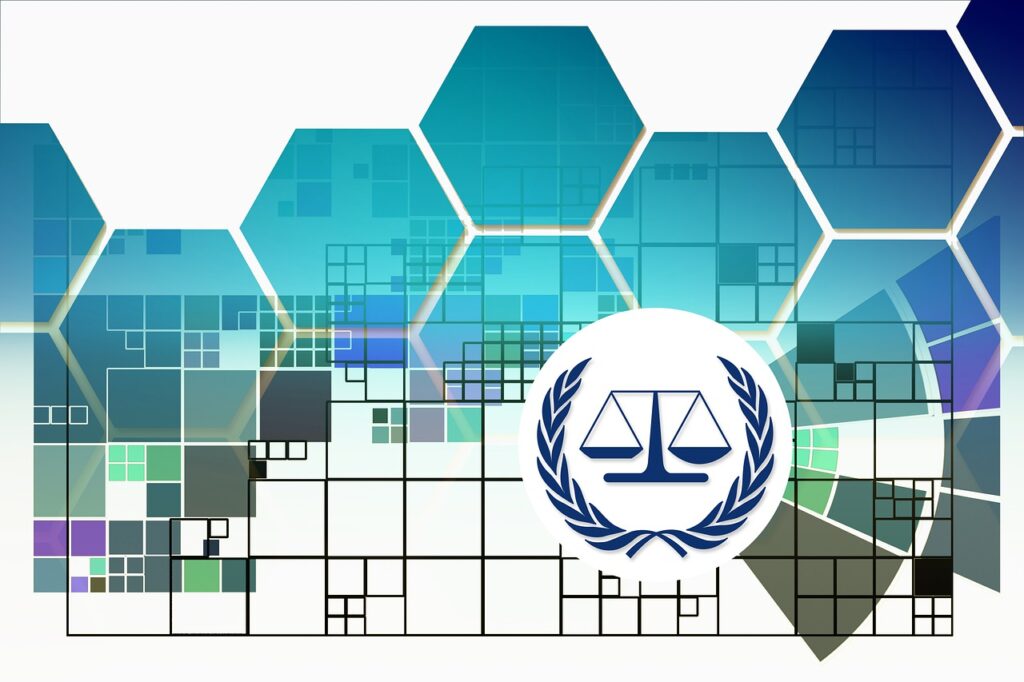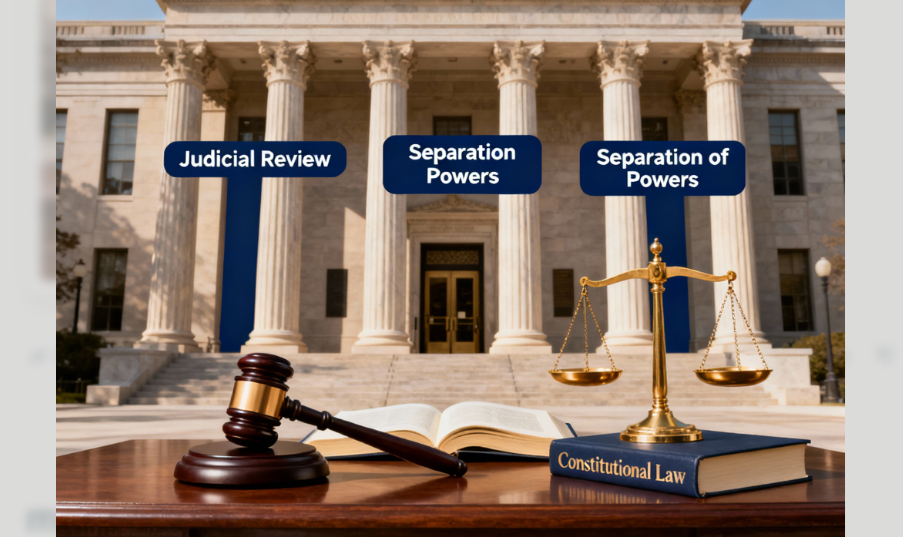Published on: 24th October 2025
Authored by: Tithi Adhikary
Madhusudan Law University
Abstract
India’s judicial system is burdened with millions of pending cases, resulting in delays, high litigation costs, and stress for litigants. Alternative Dispute Resolution (ADR) offers an efficient, flexible, and socially harmonious mechanism to resolve disputes outside courts. It encompasses arbitration, mediation, conciliation, negotiation, Lok Adalats, and online dispute resolution (ODR) platforms, providing advantages across commercial, family, labor, consumer, and community disputes.
Legislations such as the Arbitration and Conciliation Act, 1996, the Legal Services Authorities Act, 1987, and the Mediation Act, 2023, along with judicial endorsements, provide a robust legal framework. ADR not only reduces judicial backlog but also promotes cooperation, protects relationships, and ensures equitable and timely justice.
This article explores the evolution, methods, benefits, challenges, landmark cases, international comparisons, technology integration, and future directions of ADR in India, illustrating its transformative potential for the justice system.
Keywords
Alternative Dispute Resolution, ADR in India, arbitration, mediation, conciliation, negotiation, Lok Adalat, Supreme Court judgments, Mediation Act 2023, dispute resolution, online dispute resolution, court backlog, conflict resolution, legal reforms, judicial efficiency.
Introduction
India has one of the largest judicial systems globally, yet it is notoriously overburdened. Over 5 crore cases are pending across the Supreme Court, High Courts, and subordinate courts. Civil disputes may take 10–15 years, while criminal matters often remain unresolved for decades. The consequences of such delays include:
- Escalating litigation costs that burden parties financially
- Psychological stress and uncertainty for litigants
- Loss of public confidence in the judiciary
- Negative socio-economic effects, including business disruption and labor instability
Constitutional and Legal Context
- Article 21: Guarantees the right to life and personal liberty, which includes timely access to justice.
- Article 39A: Mandates the State to provide free legal remedies and ensure justice for all.
- Civil Procedure Code (CPC) and Criminal Procedure Code (CrPC): Contain provisions for settlements and alternative dispute mechanisms in certain cases.
The slow pace of litigation has necessitated practical alternatives. ADR provides speed, flexibility, cost-efficiency, and social harmony, complementing formal judicial processes.
Historical Evolution of ADR in India
Ancient and Medieval Periods
India has a long tradition of dispute resolution outside formal courts:
- Village Panchayats and Community Councils: Resolved disputes through consensus-based mediation, emphasizing reconciliation rather than punitive measures.
- Caste and Trade Guild Systems: Trade disputes, property disagreements, and social conflicts were resolved internally, maintaining social harmony.
- Principles: Emphasis on fairness, mutual consent, restitution, and restorative justice—foundations of modern ADR.
Colonial Period
- British colonial courts introduced formal arbitration practices, particularly for commercial and labor disputes.
- Courts frequently referred cases to arbitrators and conciliators, creating a legal precedent for modern statutory arbitration.
- This period laid the foundation for integrating customary Indian practices with English law, forming hybrid frameworks.
Post-Independence
- Legal Services Authorities Act, 1987: Institutionalized Lok Adalats for free, speedy, and accessible justice.
- Arbitration and Conciliation Act, 1996: Codified arbitration and conciliation, aligning with the UNCITRAL Model Law, ensuring enforceable awards.
- Mediation Act, 2023: Statutory recognition for mediation, codified qualifications and ethics for mediators, and introduced pre-litigation frameworks.
These reforms represent a shift from informal, community-based mechanisms to institutionalized ADR, balancing speed, fairness, and accessibility.
Why ADR Matters Today
- Judicial Backlog and Delay
- Over 5 crore pending cases; civil matters often take 10–15 years.
- ADR reduces delays, resolving disputes in weeks or months instead of years.
- Cost Efficiency
- ADR avoids hefty litigation fees, travel expenses, and procedural costs.
- Small businesses, startups, and low-income individuals particularly benefit.
- Confidentiality
- ADR protects sensitive information, maintaining privacy in corporate, family, and employment matters.
- Autonomy and Control
- Parties have significant control over outcomes, fostering collaborative settlements rather than imposed judgments.
- Relationship Preservation
- ADR helps preserve personal, business, and labor relationships by reducing hostility.
- Economic and Social Stability
- Quick dispute resolution enhances business confidence, investment security, and labor stability.
- Global Alignment
- USA: Mandatory pre-trial mediation in civil and family matters
- UK: Commercial arbitration widely used
- Singapore & Hong Kong: International hubs for cross-border mediation
Example: Two business partners in a profit-sharing conflict can use mediation to maintain both their business and friendship, avoiding prolonged litigation.
Main Methods of ADR
- Arbitration
- Definition: Private tribunal where arbitrator delivers a binding award.
- Law: Arbitration and Conciliation Act, 1996 (UNCITRAL Model Law).
- Key Case Law: Booz Allen & Hamilton Inc v SBI Home Finance Ltd (2011) 5 SCC 532—arbitration suitable for commercial disputes, not for criminal or matrimonial matters.
Applications: Commercial contracts, technical disputes, international trade.
Step-by-Step Arbitration Process:
- Agreement to arbitrate
- Appointment of arbitrator(s)
- Preliminary hearings
- Evidence submission
- Arbitration award issuance
- Enforcement in court if necessary
Example: International software licensing disputes resolved via arbitration avoid multi-jurisdiction litigation.
- Mediation
- Definition: Voluntary, non-binding process; mediator facilitates discussions.
- Law: Mediation Act, 2023
- Key Case Law: R. Krishna Murthi v New India Assurance Co Ltd (2019) 4 SCC 177—highlighted need for statutory mediation frameworks.
Applications: Family disputes, workplace conflicts, business negotiations.
Step-by-Step Mediation Process:
- Parties agree to mediate
- Selection of neutral mediator
- Joint sessions to discuss issues
- Private caucuses for sensitive matters
- Proposal of settlement options
- Draft and sign final agreement
Example: Workplace harassment mediation may result in reinstatement, compensation, and policy reform, offering closure without courtroom trauma.
- Conciliation
- Definition: Formal process; conciliator proposes solutions; settlements legally binding.
- Law: Part III, Arbitration and Conciliation Act, 1996
- Applications: Labor disputes, industrial relations
Example: Wage disputes in manufacturing units resolved via conciliation prevent strikes and ensure industrial peace.
Step-by-Step Conciliation Process:
- Parties submit dispute
- Conciliator evaluates issues
- Proposes settlement options
- Parties accept or reject proposals
- Formal settlement recorded as binding agreement
- Negotiation
- Definition: Direct discussion between parties without third-party intervention.
- Applications: Contract disputes, property settlements, diplomatic negotiations.
Step-by-Step Negotiation:
- Identify objectives and constraints
- Exchange proposals
- Bargain and compromise
- Draft mutual agreement
Example: Co-owners of property negotiate equitable division without litigation.
- Lok Adalats
- Definition: Community-oriented, binding forums.
- Law: Legal Services Authorities Act, 1987
- Case Law: State of Punjab v Jalour Singh (2008) 2 SCC 660—affirmed finality of Lok Adalat awards.
Applications: Motor accident claims, matrimonial disputes, compoundable criminal cases.
Advantages: Cost-free, rapid, legally binding.
Step-by-Step Lok Adalat Process:
- Filing of dispute before Lok Adalat
- Conciliation by panel
- Discussion with parties
- Agreement reached and recorded as award
- Award has force of civil court decree
- Online Dispute Resolution (ODR)
- Definition: Technology-enabled dispute resolution.
- Applications: E-commerce disputes, digital contracts, cross-border conflicts
- Example: Consumer complaints resolved in 4–6 weeks via ODR platforms.
Benefits: Accessibility, reduced cost, faster resolution, and ease of cross-border enforcement.
Comparative Analysis of ADR Methods
|
Method |
Average Time |
Cost |
Binding Nature |
Confidentiality |
Ideal Use Cases |
|
Arbitration |
3–12 months |
Medium–High |
Yes |
High |
Commercial disputes, technical disputes, international trade |
|
Mediation |
2–8 weeks |
Low–Medium |
No (can become binding if formalized) |
High |
Family disputes, workplace conflicts, business negotiations |
|
Conciliation |
1–3 months |
Low–Medium |
Yes |
Medium |
Labor disputes, industrial relations |
|
Negotiation |
Days–Weeks |
Very Low |
No |
Medium |
Property disputes, contract settlements, business arrangements |
|
Lok Adalats |
1–4 weeks |
Minimal/Free |
Yes |
Low |
Motor accident claims, matrimonial disputes, compoundable criminal cases |
|
ODR |
2–6 weeks |
Low |
Varies |
High |
E-commerce, digital contracts, cross-border disputes |
Landmark Judgments Supporting ADR
Domestic Case Laws
- Salem Advocate Bar Association v Union of India (2005) 6 SCC 344
- The Supreme Court emphasized framing ADR rules under the Civil Procedure Code, encouraging settlement of disputes outside courts to reduce backlog.
- Highlighted the importance of judicial encouragement in creating a culture of alternative dispute resolution.
- Booz Allen & Hamilton Inc v SBI Home Finance Ltd (2011) 5 SCC 532
- Clarified the scope of arbitration in commercial disputes.
- Established that arbitration is not suitable for criminal, matrimonial, or guardianship matters.
- M.R. Krishna Murthi v New India Assurance Co Ltd (2019) 4 SCC 177
- Paved the way for the Mediation Act, 2023 by recognizing the necessity for statutory mediation frameworks.
- Emphasized the need for trained mediators and formal processes to ensure enforceable outcomes.
- State of Punjab v Jalour Singh (2008) 2 SCC 660
- Confirmed the finality and enforceability of Lok Adalat awards, ensuring speedy resolution for compoundable disputes.
International Case Laws
- AT&T Technologies v Communications Workers (USA, 1986)
- Upheld arbitration clauses in employment contracts.
- Reinforced the principle of party autonomy in selecting dispute resolution mechanisms.
- Fiona Trust & Holding Corp v Privalov (UK, 2007)
- Enforced international arbitration agreements, emphasizing that disputes should be resolved in forums chosen by the parties.
- Singapore International Mediation Centre (SIMC)
- Recognized as a global hub for cross-border commercial disputes using mediation.
- Demonstrates India’s potential to replicate efficient, neutral, international dispute resolution platforms.
Socio-Economic Impact of ADR
ADR has far-reaching implications beyond courts:
- Business Confidence
- Companies engage in commerce knowing disputes can be resolved rapidly, fairly, and privately.
- Encourages foreign investment by providing predictable and enforceable mechanisms.
- Labor Stability and Industrial Peace
- Labor disputes resolved via conciliation or mediation prevent strikes and maintain productivity.
- Example: Textile mills and manufacturing units using conciliation to resolve wage and working condition disputes.
- Family and Social Harmony
- Family and matrimonial disputes resolved through mediation reduce emotional trauma.
- Example: Property division disputes settled via mediation allow families to maintain relationships and avoid lengthy court battles.
- Access to Justice for Marginalized Groups
- Lok Adalats and free ADR mechanisms provide justice to economically disadvantaged citizens.
- Example: Motor accident claims for low-income victims resolved without legal costs.
- Economic Efficiency
- Reduces opportunity costs associated with prolonged litigation.
- Businesses can focus on operations rather than extended legal battles.
Challenges Facing ADR in India
Despite its promise, ADR faces significant hurdles:
- Limited Awareness
- Many citizens, especially in rural areas, remain unaware of ADR options.
- Resistance from Lawyers
- Some legal practitioners perceive ADR as reducing litigation revenue.
- Quality Standards
- Lack of uniform accreditation for mediators, arbitrators, and conciliators.
- Enforceability Issues
- Informal agreements may fail without proper documentation or registration.
- Infrastructure Gaps
- ADR centers are unevenly distributed, mostly concentrated in metropolitan cities.
- Cultural and Social Barriers
- Hierarchical societal norms may discourage open dialogue during mediation.
- Gender-sensitive issues often require specially trained mediators to ensure equitable participation.
- Technological Integration
- Digital platforms are still in nascent stages, limiting access to ODR for rural populations.
Mini Case Studies of ADR in India
- Commercial Arbitration – Tech Dispute
- Scenario: Two IT firms disputed over software licensing.
- Method: Arbitration under the Arbitration and Conciliation Act, 1996
- Outcome: Arbitrator delivered a binding award within 6 months, preserving business continuity and trade relations.
- Workplace Mediation – Employment Conflict
- Scenario: An employee alleged harassment in a corporate office.
- Method: Mediation under Mediation Act, 2023
- Outcome: Agreement included reinstatement, compensation, and HR policy reform, resolved in 3 weeks.
- Labor Conciliation – Manufacturing Unit
- Scenario: Wage dispute among factory workers.
- Method: Conciliation under Part III, Arbitration & Conciliation Act, 1996
- Outcome: Fair settlement achieved in 2 months; strikes avoided; industrial peace maintained.
- Lok Adalat – Matrimonial Dispute
- Scenario: Property division dispute in a middle-class family.
- Method: Lok Adalat under Legal Services Authorities Act, 1987
- Outcome: Settlement reached in 1 day; cost-free, legally binding, family harmony preserved.
- Online Dispute Resolution – E-Commerce Claim
- Scenario: Consumer complaint regarding defective electronics purchased online.
- Method: ODR platform of e-commerce marketplace
- Outcome: Refund issued in 4 weeks, no litigation required, consumer satisfaction achieved.
Global Best Practices and Lessons for India
- Mandatory Pre-Trial Mediation
- USA and Canada require mediation for family and civil disputes.
- Benefits: early resolution, cost reduction, reduced court backlog.
- Institutional Arbitration Centers
- London Court of International Arbitration (LCIA) and Singapore International Arbitration Centre (SIAC) provide neutral, well-regulated arbitration frameworks.
- India can expand India International Arbitration Centre (IIAC) as a global hub.
- Technology Integration
- ODR platforms in EU resolve cross-border disputes efficiently.
- India can scale eLok Adalat and online mediation platforms nationwide.
- Accreditation and Training
- Global standards for mediator training ensure neutrality, fairness, and enforceability.
- India is formalizing this under Mediation Act, 2023.
- Public Awareness Campaigns
- Awareness drives in Singapore, UK, and USA increase participation and acceptance of ADR.
- India can leverage legal aid cells, NGOs, schools, and social media campaigns.
Technological Integration in ADR
- e-Arbitration and Virtual Hearings
- COVID-19 accelerated virtual hearings and digital submission of evidence.
- Platforms: IIAC Virtual Arbitration, Supreme Court e-filing portals
- Online Mediation Platforms
- Example: Ministry of Law & Justice ODR platform for consumer disputes.
- Benefits
- Reduces geographical barriers, speeds up resolution, lowers costs, ensures confidentiality.
- Future Prospects
- AI-assisted dispute evaluation for preliminary negotiation guidance
- Blockchain for secure, tamper-proof recording of settlement agreements
Reforms to Strengthen ADR in India
- Expand public awareness campaigns using legal aid, NGOs, and online platforms.
- Standardize training and accreditation for mediators, arbitrators, and conciliators.
- Strengthen ADR infrastructure in tier-2 and tier-3 cities.
- Promote mandatory compliance with arbitration and mediation clauses.
- Encourage Online Dispute Resolution for accessibility in the digital era.
- Foster cultural acceptance through education, seminars, and sensitization.
- Introduce ADR curricula in law schools to prepare future lawyers and judges.
- Support public-private partnerships to fund and maintain ADR centers nationwide.
Conclusion
Alternative Dispute Resolution (ADR) is no longer a peripheral mechanism—it is a transformative pillar of India’s justice system. By offering timely, cost-effective, and harmonious resolutions, ADR alleviates court congestion, safeguards relationships, and promotes equitable justice across commercial, family, labor, and consumer disputes.
With legislative support from the Arbitration and Conciliation Act, 1996, Legal Services Authorities Act, 1987, and Mediation Act, 2023, alongside judicial endorsement, ADR is firmly institutionalized. Incorporating technology, global best practices, accreditation standards, and public awareness, India can transition from litigation-heavy justice to cooperative, culturally-sensitive, and accessible dispute resolution.
Truly, ADR represents a paradigm shift: from confrontation to cooperation, from hostility to harmony, and from delay to solution. It is the space where disputes meet solutions, not delays.




